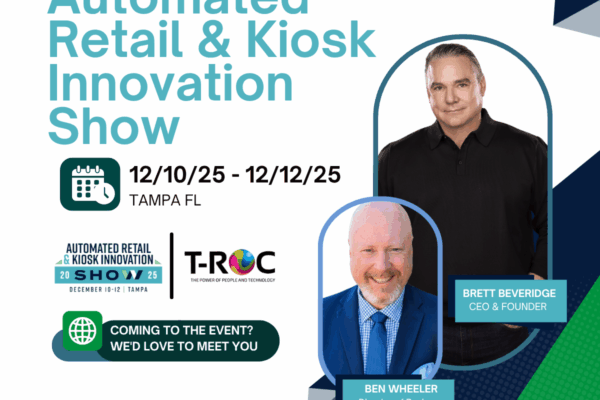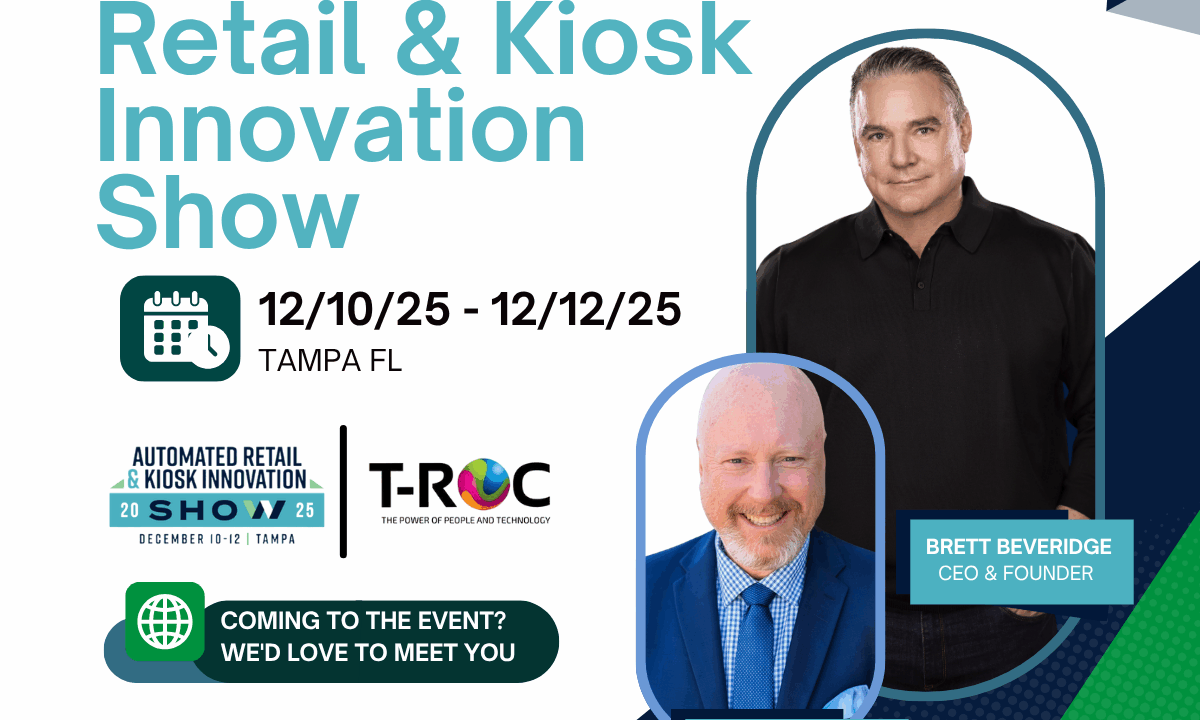
Your Guide to Building a Brand Ambassador Program
Building a strong brand and establishing a loyal customer base is essential for the success of any business. One effective way to achieve this is through a brand ambassador program. A brand ambassador program involves recruiting individuals who are passionate about your brand and willing to promote it to their networks.
So, how do you go about creating a successful brand ambassador program? In this article, we will provide a comprehensive guide to building a brand ambassador program, covering everything from understanding the purpose of brand ambassador programs to ensuring legal compliance. Whether you’re a small start-up or a large corporation, this guide will help you learn how to build a brand ambassador program that drives brand awareness and boosts sales.
At T-ROC, we have decades of experience in developing and implementing successful brand ambassador programs for a wide range of clients across many industries. Our team of experts understands the intricacies of building strong brand ambassador partnerships and knows how to effectively leverage their influence to drive brand awareness and growth.
If you don’t already have a brand ambassador program in place and are looking to boost engagement and brand awareness, both you and your bottom line will be happy you decided to implement this effective marketing strategy. But where should you start?
Understanding Brand Ambassador Programs
What is a Brand Ambassador Program?
A brand ambassador program is a strategy where businesses hire or inspire individuals to promote their brand to their own respective networks. These individuals, known as brand ambassadors, help amplify brand voice and visibility while boosting your company’s engagement rate and social presence.
Brand ambassadors can play various roles in a company, depending on the organization’s goals and needs. They can function as promoters, spreading positive word-of-mouth about the brand through personal interactions, social media, or other channels. They can also act as advocates, representing the company’s values and mission and actively engage with customers and prospects to build a more loyal following.
Additionally, brand ambassadors can serve as influencers, leveraging their own personal platforms and networks to endorse and promote the company’s products or services. They may also take part in events and campaigns, reinforcing the brand’s presence and create opportunities for customer engagement. Ultimately, brand ambassadors are essential in building and maintaining a strong brand reputation, establishing trust with customers, and driving business growth.
Types of Brand Ambassadors
Brand ambassador programs can either be formal or informal. Companies with formal brand ambassador programs usually manage theirs in a structured manner, complete with processes, training, and guidelines. On the other hand, an informal brand ambassador program is more loosely managed where happy customers voluntarily promote the brand.
Successful Brand Ambassador Program Examples
Companies such as Red Bull and Lululemon are excellent examples of businesses that have utilized these programs to their advantage. They’ve identified individuals who resonate with their brand, and these passionate ambassadors have subsequently promoted them through their personal social media platforms.
How to Build a Brand Ambassador Program
Setting Objectives and Goals
When setting goals and objectives for a brand ambassador program, it is important to consider the overall impact and representation of the brand. Some key goals typically include: increasing brand awareness and visibility, creating a positive brand image, enhancing brand credibility through testimonials and reviews, driving brand loyalty and customer engagement, and ultimately increasing sales and revenue.
Objectives frequently include: recruiting and training brand ambassadors, setting targets for social media reach and engagement, organizing brand events or collaborations, facilitating influencer partnerships, and monitoring and analyzing campaign effectiveness. By aligning goals and objectives with the brand ambassador role, companies can ensure a cohesive and impactful program.
Identifying Your Target Audience
The next step is to identify your target audience. These individuals are the potential brand ambassadors who will effectively echo your brand voice to their respective networks.
Recruitment and Selection
The recruitment and selection process is crucial. Determining who embodies the ideal brand ambassador for your brand will significantly influence the success of the brand ambassador program. Think about who communicates well, exhibits a high amount of authenticity and passion, has a great network, and fits your brand personality.
Training and Onboarding
Equally important is the training and onboarding process. Successful brand ambassador programs ensure their representatives are well trained and equipped to portray their brand perfectly.
Empowering and Engaging Brand Ambassadors
Empower your ambassadors. Engagement goes beyond just having them share insights about your brand. Part of your strategy is to maintain an active brand ambassador community.
One way to empower your brand ambassador is to provide them with training workshops and resources, such as helping them develop public speaking skills or providing them with networking opportunities at industry events.
Another way to keep them engaged is to reward them with special perks, such as bonuses, exclusive access to new products, or other gifts.
Tracking and Measuring Performance
Track and measure your brand ambassador’s performance. This is done through tracking sales, assessing engagement levels, or monitoring hashtag use on social media. Measuring these elements assures you’re meeting your objectives and goals.
Tracking and measuring the performance of your brand ambassador is crucial for understanding the effectiveness of your marketing strategies and ensure that you are achieving your objectives and goals. One way to do this is by tracking sales to see how your brand ambassador’s efforts are contributing to overall revenue. By analyzing sales data, you can determine whether their promotional activities are in fact driving increased purchases.
Assessing engagement levels is another important aspect of measuring brand ambassador performance. This involves evaluating the levels of interaction and involvement your ambassadors generate among your target audience. This can be done by monitoring metrics such as likes, comments, shares, and followers on social media platforms. A higher level of engagement indicates that your brand ambassador is successfully capturing the attention and interest of the audience.
Monitoring hashtag use on social media is also an effective way to measure the impact of your brand ambassador. By tracking the number of times your designated hashtags are used in relation to your ambassador’s activities, you can gauge the reach and visibility of their campaigns. This provides valuable insights into the brand ambassador’s ability to effectively create and disseminate content that resonates with your target audience.
Beyond the typical quantifiable measures like sales and revenue generated, it also includes evaluating the ambassador’s impact on brand awareness, customer engagement, and social media presence. Monitoring the ambassador’s ability to effectively communicate the brand’s values and messages, their influence on the target audience, and the positive associations created with the brand is also essential.
Additionally, measuring the ambassador’s ability to build and maintain relationships with stakeholders, their level of trust and credibility, and their alignment with the brand’s overall marketing strategy are important factors in evaluating their performance. A comprehensive evaluation of a brand ambassador’s performance should consider both quantitative and qualitative measures to gain a holistic understanding of their contribution to the brand.
Measuring these various elements not only enables you to evaluate the effectiveness of your brand ambassador but helps you determine if you are still on track to meet your objectives and goals. It allows you to identify any areas in need of improvement or adjustments in your brand ambassador program to optimize its impact. By regularly measuring the performance of your brand ambassador, you can ensure that your marketing efforts are generating the desired results.
Promoting Your Brand Ambassador Program
People have to know about your ambassador program, right? This might include promoting it on social media platforms, through blog posts, at industry events, or even through the brand ambassadors themselves.
Managing and Scaling Your Program
As your ambassador program grows, with an increasing number of ambassadors and activities, effective management becomes crucial for its success. Without proper management, it can become challenging to coordinate tasks, maintain consistent communication, and ensure that the ambassadors are aligned with your program’s goals and values. Scaling an ambassador program can be done in two primary ways: investing in software designed to manage multiple ambassadors or delegating management and coordination responsibilities to an ambassador leader.
Investing in brand ambassador software provides a systematic approach to handle a larger number of ambassadors efficiently. Such software often offers features like task assignment and tracking, communication tools, performance analytics, and reporting capabilities. Using ambassador management software streamlines processes, save time, and provides a centralized platform for managing and organizing your ambassadors’ activities.
On the other hand, delegating management and coordination duties to an ambassador leader may be a more effective way to scale your program. An ambassador leader can be someone from your team who takes on the responsibility of overseeing the program, manage ambassadors’ activities, and facilitate communication between the ambassadors and your organization. This leader should have a strong understanding of your brand, goals, and ambassador expectations, as well as excellent organizational and communication skills. Their role will involve training new ambassadors, assign tasks, provide guidance and support, and ensure the program runs smoothly.
Whether you choose to invest in software or appoint an ambassador leader, it is essential to establish clear guidelines, procedures, and expectations for managing the program. Regular communication and feedback loops between the management and ambassadors are crucial to foster a collaborative and productive environment.
Scaling your ambassador program and implementing effective management strategies will not only help you handle a larger group of ambassadors but also maximize their impact, maintain consistency, and drive better results for your brand or organization.
Ensuring Legal and Ethical Compliance
Finally, it’s crucial to uphold legal and ethical compliance in your program. Be mindful of laws such as Fair Trade, copyright, and promotion and consent laws that can potentially affect your brand ambassador program.
When it comes to legal and ethical compliance in a brand ambassador program, there are several important considerations to keep in mind. Here are a few key areas to focus on:
Fair Trade Laws
Fair trade laws are designed to protect consumers and ensure fair competition in the market. It is crucial to adhere to these laws to avoid any unfair or deceptive practices in your brand ambassador program. This includes being transparent about any incentives or compensation provided to ambassadors and ensuring that all claims about your products or services are accurate and not misleading.
Copyright Laws
It is important to respect copyright laws when implementing a brand ambassador program. This means obtaining proper permission to use any copyrighted material, including images, videos, or written content, and ensuring that ambassadors do not infringe on the intellectual property rights of others while promoting your brand. It is also recommended to have clear guidelines on how ambassadors can use and share brand-related content.
Promotion and Consent Laws
When implementing a brand ambassador program, you must be mindful of laws related to promotions and consent. This includes obtaining proper consent from ambassadors to use their names, image, or testimonials in your marketing materials. Additionally, if you run any campaigns or contests with ambassadors, you need to ensure compliance with local regulations, such as providing clear rules, terms, and conditions and avoiding any deceptive or misleading practices.
Ethics
In addition to these specific laws, it is essential to maintain high ethical standards throughout your brand ambassador program. This includes fostering a positive and inclusive working environment for ambassadors, treating them fairly, and being transparent about the expectations, guidelines, and compensation involved. It is also important to regularly monitor and evaluate the actions of your brand ambassadors to ensure they align with your brand values and objectives.
By upholding legal and ethical compliance in your brand ambassador program, you can not only mitigate any potential risks or legal issues but also build higher levels of trust with your audience and establish a strong reputation for your brand.
Key Take-Away
The takeaway here is simple: an effective brand ambassador program often significantly contributes to the digital marketing success and overall image of your brand. So what are you waiting for?
At T-ROC, we understand the importance of building a strong brand ambassador program to effectively promote and represent your brand. Our experienced team is dedicated to providing comprehensive support and guidance to help you create a successful program tailored to your specific needs.
We recruit, train, and manage brand ambassadors who will authentically connect with your target audience and create brand awareness through positive word-of-mouth. With our strategic approach, we assist you in developing a cohesive brand ambassador program that will not only elevate your brand’s reputation but also drive customer loyalty and ultimately boost your business growth. Learn more about our brand ambassador program today.
FAQs
How do you structure a brand ambassador program?
A brand ambassador program can be structured in a few key steps:
- First, it is essential to define the goals and objectives of the program, such as increasing brand awareness or driving sales.
- Next, it is crucial to identify the target audience and the ideal characteristics of brand ambassadors who would best represent the brand’s values and image.
- Once the ambassadors are selected, clear guidelines and expectations should be communicated to them regarding their responsibilities, such as promoting the brand on social media or attending events. Providing ambassadors with training and resources is critical. Additionally, establishing an incentive or reward system, such as a commission or exclusive perks, encourages ambassadors to drive results.
- Regular communication and monitoring of ambassador activities are also necessary to track performance and provide ongoing support.
How can my company benefit from a brand ambassador program?
A brand ambassador program can greatly benefit your company by increasing brand awareness, build a positive reputation, and drive customer loyalty. When you have dedicated brand ambassadors representing your company, they become the face of your brand and help promote it in a genuine and relatable way.









